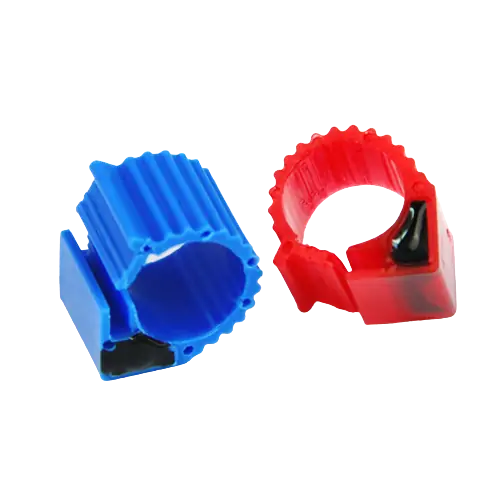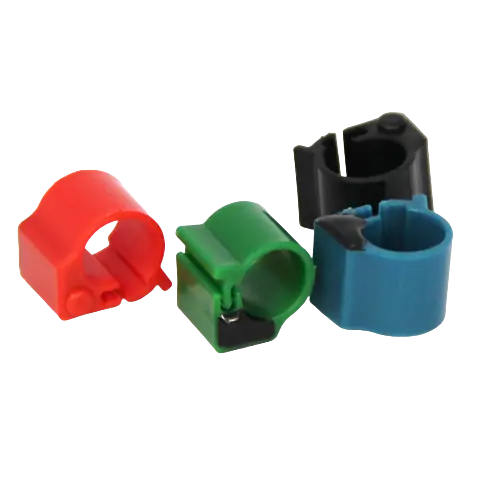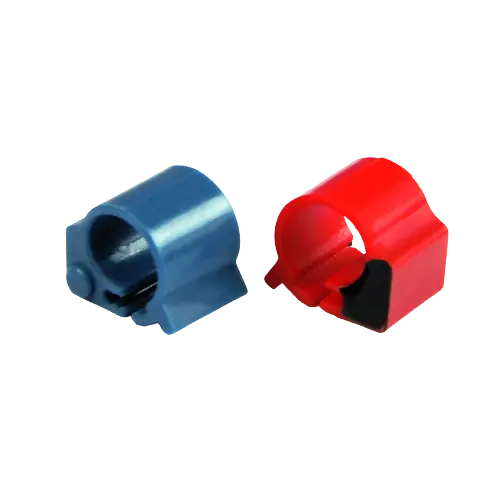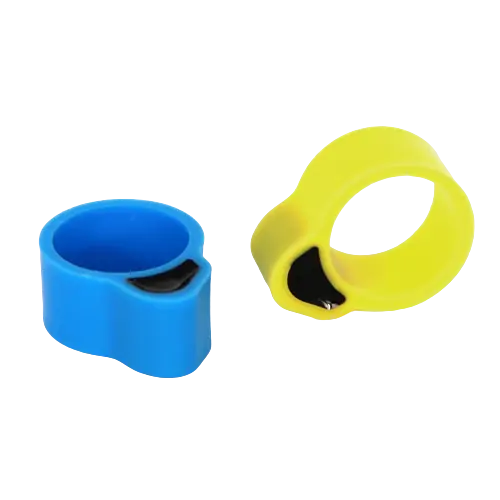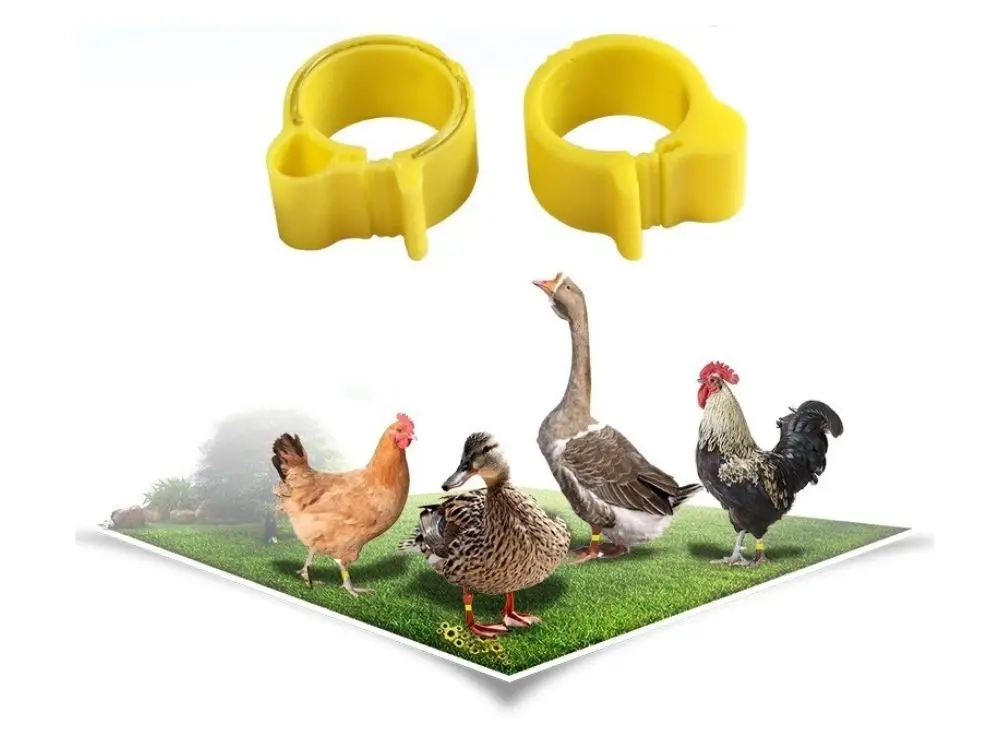RFID Pigeon Foot Rings
RFID technology identifies individual pigeons using unique ID codes. The leg bands are lightweight and comfortable. They are very durable for pigeons. Tiny RFID chips are in the bands. Antennas transmit data when near a reader. This allows easy tracking of each pigeon.
Pigeon fans, farmers, and racers are increasingly using RFID leg bands. The RFID bands humanely monitor each bird. Old bands need to capture the birds again to identify them. However, RFID bands can be scanned remotely. This makes recording and tracking very easy.
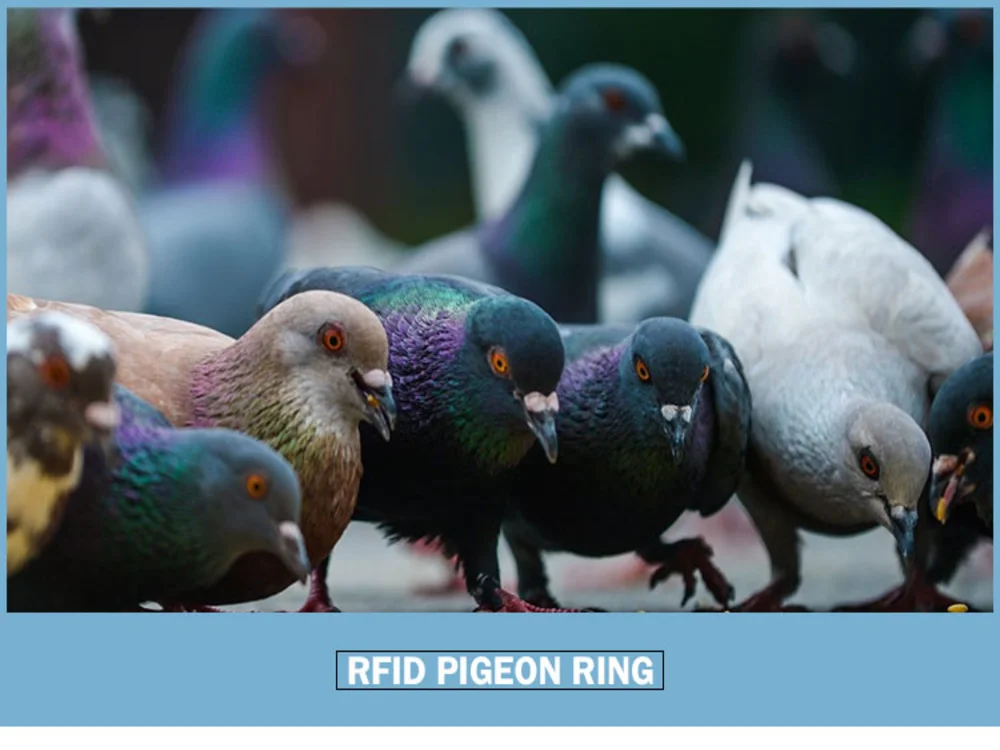
RFID Chicken Leg Rings And Their Utility
Similar to RFID pigeon leg bands, plastic chicken leg rings with identification numbers are also commonly used by poultry farmers for tracking and identifying their chickens. These plastic bands that slip over the chicken’s leg uniquely identify each chicken in the flock.
Chicken leg rings share many of the same benefits as RFID pigeon bands. They allow easy visual identification without the need to recapture the chickens. The numbers or letters on the rings can be associated with each chicken’s records. This helps track growth rate, egg production, pedigree, medication, etc., for management purposes. With RFID and standard leg rings, chickens can be monitored for health without stress.
However, RFID is more accurate and scans automatically compared to standard rings. But for small flocks or backyard chickens, numbered plastic rings cost less. However, in terms of ease and technology, RFID bands are better.
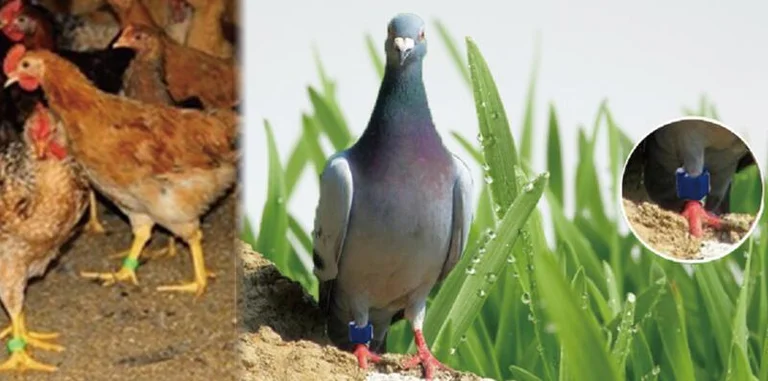
RFID Pigeon Rings and Leg Bands
Difference Between Traditional Pigeon Identification And RFID Technology
RFID pigeon bands represent a marked improvement over old-fashioned methods. Let’s take a look at the difference between the latest and old ways of pigeon identification:
Traditional Methods
Traditional identification involved attaching a simple plastic or aluminum leg band. The plastic band had a printed identification number.
Rubber rings tracked racing pigeons with the birds’ ID numbers and a designed pigeon racing/timing clock.
These older methods required recapturing the bird to read its ID.
RFID Methods
Modern RFID bands allow contactless scanning of the pigeon’s unique code. It eliminates any need to recapture birds.
The RFID microchip tags are also much more durable, resilient, and comfortable for the bird compared to older-style bands. With no ID numbers to wear off or fade, RFID allows permanent and reliable identification.
RFID also allows the automation of tasks like race timing, pedigree tracking, and health monitoring.
Benefits Of RFID Pigeon Leg Bands
RFID pigeon leg bands offer several advantages over traditional pigeon identification methods:
Accurate Tracking and Identification
Each RFID pigeon band has a unique ID number or code. When near a reader, it transmits the code. This lets each pigeon be identified. In large groups, birds can be identified without recapture. This allows for tracking pigeon movements, racing, breeding, and more.
Durable and Resilient
RFID pigeon bands are lightweight but very durable. They are made of high-quality plastic. They have an IP68 waterproof rating. This makes them resistant to moisture and water. The advancement in pigeon RFID rings has made it possible to make them durable.
Lightweight and Comfortable
An RFID pigeon leg band only weighs about 1 gram, so it does not add much weight to the bird’s leg. Therefore, these bands do not interfere with their ability to fly and move. They also have smooth edges, ensuring comfort to the birds’ legs without any friction or irritation.
Reduced Animals Stress
RFID bands reduce stress for pigeons and poultry. Traditional bands required recapturing birds to read IDs. This was stressful for the animals. But RFID allows remote scanning with no recapture needed. Birds don’t suffer repeated stress from human handling. Their health and well-being improve without frequent interruptions.
Enhanced Breeding Insights
The unique ID codes can track lineage and relationships. RFID bands record information on things like racing performance and egg production. This helps in selecting the best birds to breed. Over time, RFID pigeon ring data enables an understanding of health and performance traits that are passed on to offspring. This allows breeders to make steady improvements.
Automated Race Timing
RFID pigeon bands allow automated timing in pigeon races. This automatically records the arrival time with manual intervention. RFID timings are more accurate than manually recording arrival times. Automated timing eliminates human error in race results. RFID enables accurate race management even with large numbers of pigeons.
Applications Of RFID Pigeon Leg Bands
Poultry Tracking and Management
RFID pigeon bands enable individual identification and tracking of chickens in poultry farms. This allows for monitoring each chicken’s health, egg-laying frequency, growth rate, and more. It also facilitates inventory management and logging of birds.
Pigeon Racing and Management
Fanciers and enthusiasts involved in pigeon racing widely rely on RFID leg bands to manage and race their pigeons. The bands allow accurate timing and record-keeping during pigeon racing. They also facilitate breeding management by tracking individual birds’ pedigree and health status.
General Bird Management
Zoos, aviaries, and bird sanctuaries can also use RFID pigeon bands to accurately identify and monitor the birds under their care without stressing or recapturing them. This allows for keeping precise records of each bird for management purposes.
Case Studies
The following are the three successful case studies of using RFID pigeon leg bands. Let’s take a look at each of these case studies to better understand them:
Case Study 1: UHF RFID Tag Antenna for Racing Pigeon
The first case study looks at a small, flexible RFID antenna for pigeon rings. The UHF antenna is printed on thin film. It is shaped like a closed loop. This allows wrapping it into a double plastic ring. The ring is similar in size to real pigeon rings.
A chip resistor matches the impedance between the tag and the antenna. This improves performance for tracking pigeons. The innovative antenna shows how RFID can efficiently and securely manage racing pigeons.
Case Study 2: RFID Pigeon Leg Bands in a Poultry Farm
A poultry farm in Europe used RFID pigeon bands to track their poultry. The farm found the bands effectively identified each bird. The RFID leg bands were durable and comfortable for the poultry. They were easy to use and cost-effective for the farm. The bands accurately tracked and managed each bird.
Case Study 3: RFID Pigeon Leg Bands at a Pigeon Racing Club
A pigeon racing club in the US used RFID leg bands to track their racing pigeons. The lightweight bands comfortably identified each pigeon. The club found the durable RFID bands suitable for racing. They accurately tracked and identified each pigeon. The RFID leg bands were great for managing the pigeon club’s racing.
RFID pigeon rings provide a sophisticated method for identifying and tracking pigeons. The bands offer reliable tagging without impeding the bird’s movement. Durable and waterproof, they are built to last under racing conditions. The unique ID codes in each RFID tag allow individual identification.
Moreover, it also allows for pigeon and chicken tracking. Its features include automated race timing for pigeon fanciers and optimized breeding, egg tracking, and health monitoring for poultry farmers. RFID pigeons and chicken bands are key technologies for today’s animal management.
Continuing improvements in RFID and sensing technology will likely lead to even more advanced “smart bands” for birds. Whether used for pigeon racing or poultry farming, RFID leg bands provide benefits. It is a lot better than traditional methods.
The ability to accurately monitor each bird individually can support improved training, health, breeding, and overall welfare. We recommend that you try an RFID pigeon ring on one of your pigeons.

